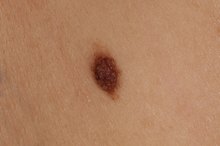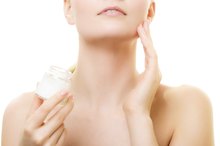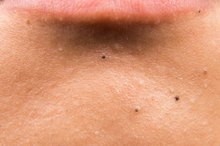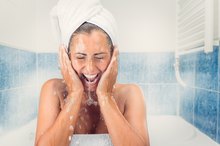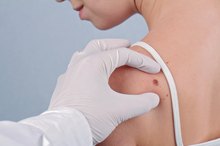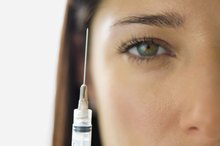Side Effects of a Micro Peel
Skin, the largest organ of the body, covers a surface area of about 18 square feet in a healthy adult. The outer layer of skin, the epidermis, is made up of dead, flattened cells, and is less than 1/100th of a millimeter thick. As skin cells age, they move from the base layer of the epidermis toward the surface of the skin. Aging and lifestyle can slow this process so that dead cells stay on the skin for longer periods, giving a dull, dry appearance. A micro peel can gently remove this layer of cells to reveal younger, fresher-looking skin.
Stinging
A micro peel, sometimes called the “lunch-hour peel,” involves three steps. The first step, abrasion, uses either an enzyme solution or mechanical abrasion (scraping) to remove the top cell barrier. Next, an alpha hydroxy acid (AHA) solution, either glycolic acid from sugar cane or lactic acid from sour milk, is applied to skin and allowed to set for an amount of time determined by your dermatologist. After neutralizing the acid, your dermatologist uses cryogenic therapy, a type of dry-ice-freezing therapy that acts as both an anti-inflammatory and antibacterial agent.
Micro peels rarely cause lasting side effects. Stinging, however, can occur during the AHA application. While it is temporary and calmed by the cryogenic application, people with sensitive skin may find this prohibitive.
- A micro peel, sometimes called the “lunch-hour peel,” involves three steps.
- The first step, abrasion, uses either an enzyme solution or mechanical abrasion (scraping) to remove the top cell barrier.
Erythema
How to Remove Moles With Glycolic Acid
Learn More
Erythema, or redness, occasionally accompanied by inflammation, can occur after a micro peel. "Aging Skin Net," the journal for the American Academy of Dermatology, writes that the redness may last for a day or two after treatment 1.
Increased Sensitivity
Because the top layer of skin forms a protective barrier for the body, removing it, even at the microscopic level, may cause increased sensitivity to substances that would otherwise not be irritating such as:
- fragranced makeup
- perfumes
- soaps
Your dermatologist might recommend using a gentle cleanser for a couple of days after the treatment or to avoid certain cosmetics.
Related Articles
References
- Aging Skin Net: The Lunchtime Peel
- American Society of Plastic Surgeons: Chemical Peel
- A Board Certified Plastic Surgeon Resource: Micro Peel
- Kubiak M, Mucha P, Dębowska R, Rotsztejn H. Evaluation of 70% glycolic peels versus 15% trichloroacetic peels for the treatment of photodamaged facial skin in aging women. Dermatol Surg. 2014 Aug;40(8):883-91. doi: 10.1097/01.DSS.0000452669.84787.bf.
Writer Bio
Katherine Mariaca is a professional freelance journalist who specializes in alternative and complementary medicine, and skin and body care treatments. A longtime spa director and VP of skin care companies, Mariaca developed products and services for the spa industry. She earned a B.S. from Tufts and an M.F.A. from Lesley.
